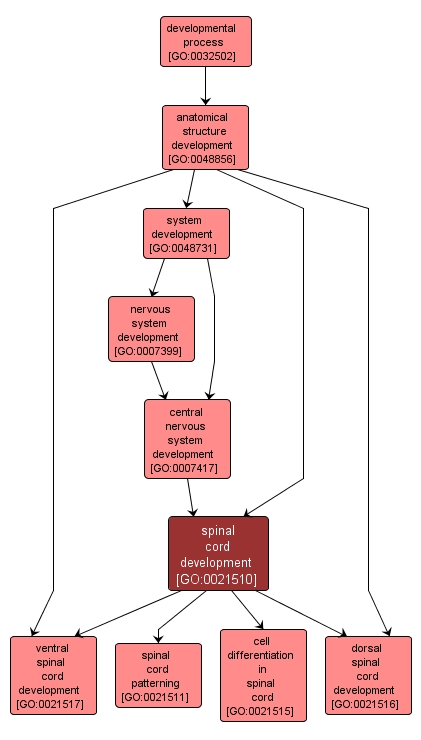GO TERM SUMMARY
|
| Name: |
spinal cord development |
| Acc: |
GO:0021510 |
| Aspect: |
Biological Process |
| Desc: |
The process whose specific outcome is the progression of the spinal cord over time, from its formation to the mature structure. The spinal cord primarily conducts sensory and motor nerve impulses between the brain and the peripheral nervous tissues. |
|

|
INTERACTIVE GO GRAPH
|














